Dwarf Conifer Garden Ideas: Beautiful and Low-Maintenance Landscaping Tips
Dwarf conifers offer a charming and versatile way to enhance any garden space. These small, slow-growing trees and shrubs come in various shapes, sizes, and colors, making them perfect for adding year-round interest.
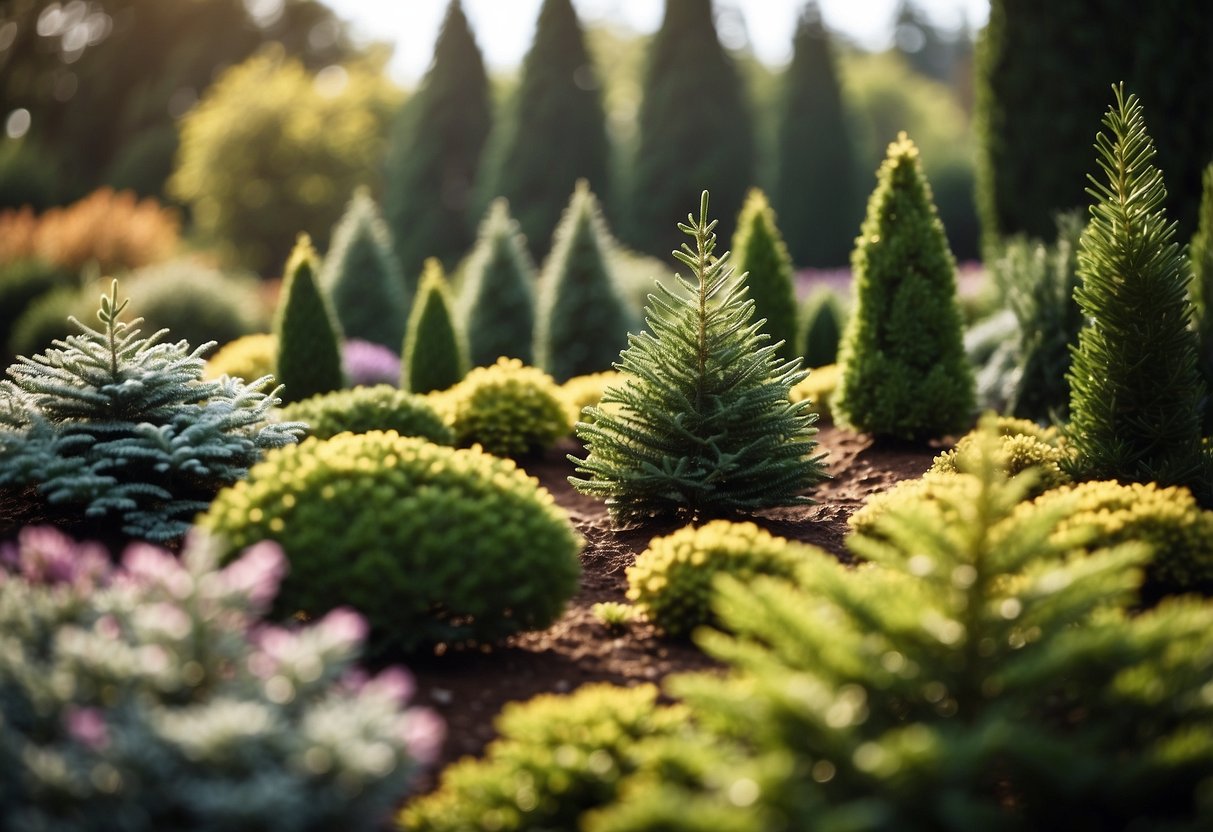
Curious about incorporating dwarf conifers into your garden? These miniature evergreens not only serve as attractive focal points but also provide structure and texture to your landscape. Whether you have a large yard or a small urban garden, there’s a dwarf conifer that suits your needs.
1) Pinus mugo ‘Mops’
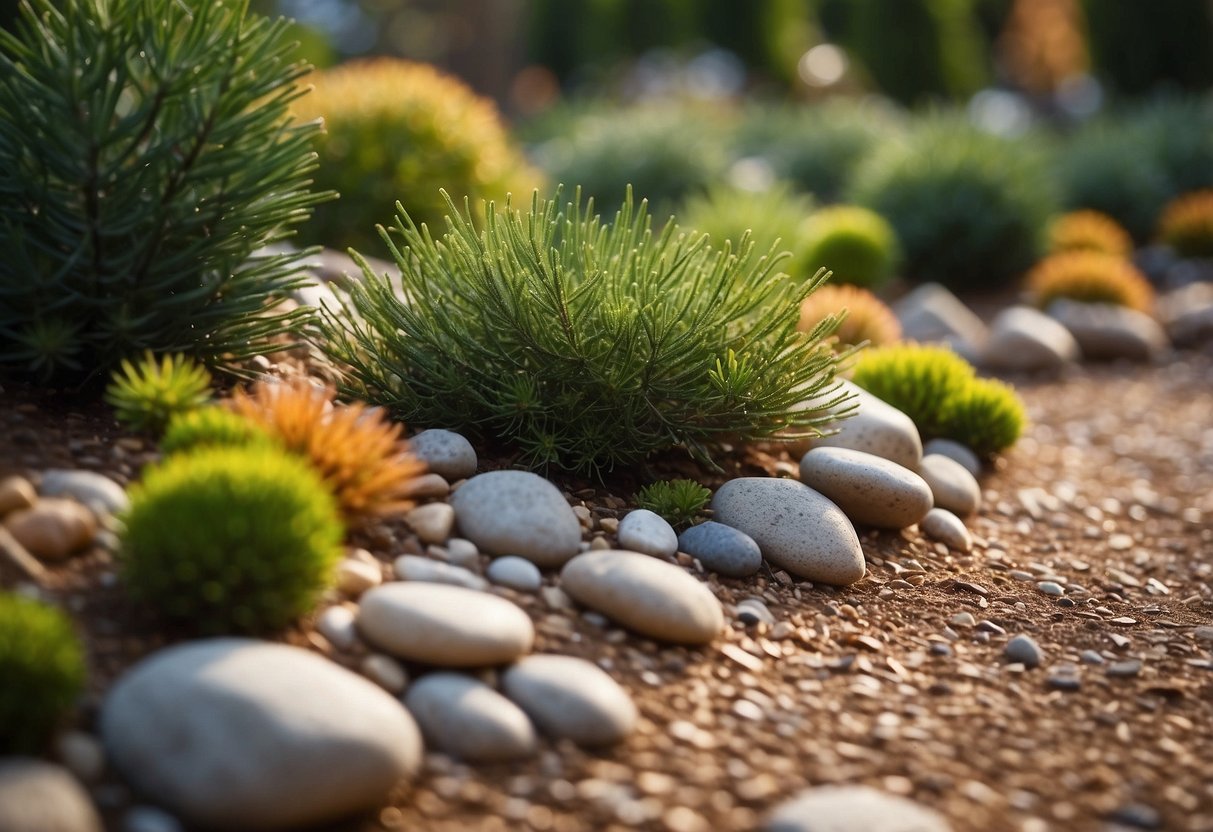
Pinus mugo ‘Mops’ is a great choice for small gardens. This dwarf evergreen conifer forms a dense, round shape. Its slender, silvery-blue needles provide year-round color.
In winter, the foliage takes on a golden hue. It grows slowly, about 3-5 inches per year, making it easy to manage. Use it in rock gardens or foundation plantings for a neat, tidy look.
Because of its compact size, Pinus mugo ‘Mops’ fits well in confined spaces. Whether you have a small garden or a large one, it can add a touch of evergreen beauty.
2) Chamaecyparis obtusa ‘Nana Gracilis’

Chamaecyparis obtusa ‘Nana Gracilis’ is a fantastic choice for your dwarf conifer garden. This slow-growing conifer has lush, glossy dark green foliage.
‘Nana Gracilis’ stays fairly small, making it perfect for tight spaces. The shrub’s unique, shell-like sprays of foliage add charm and texture to your garden.
This conifer prefers full sun to part shade. It’s known for its reliable structure and elegant Japanese aesthetic. You can expect it to grow about 3-6 inches per year, reaching up to 8 feet tall.
Check out more about Nana Gracilis for your garden!
3) Picea glauca ‘Conica’

Picea glauca ‘Conica’, also called Dwarf Alberta Spruce, looks like a tiny Christmas tree. It has bright green needles that turn blue-green as they age.
This dwarf evergreen works great in gardens and mixed borders. Its slow growth rate of 2 to 4 inches per year makes it perfect for containers and topiaries.
For more about dwarf Alberta spruces, you can read from Garden Top.
4) Thuja occidentalis ‘Smaragd’
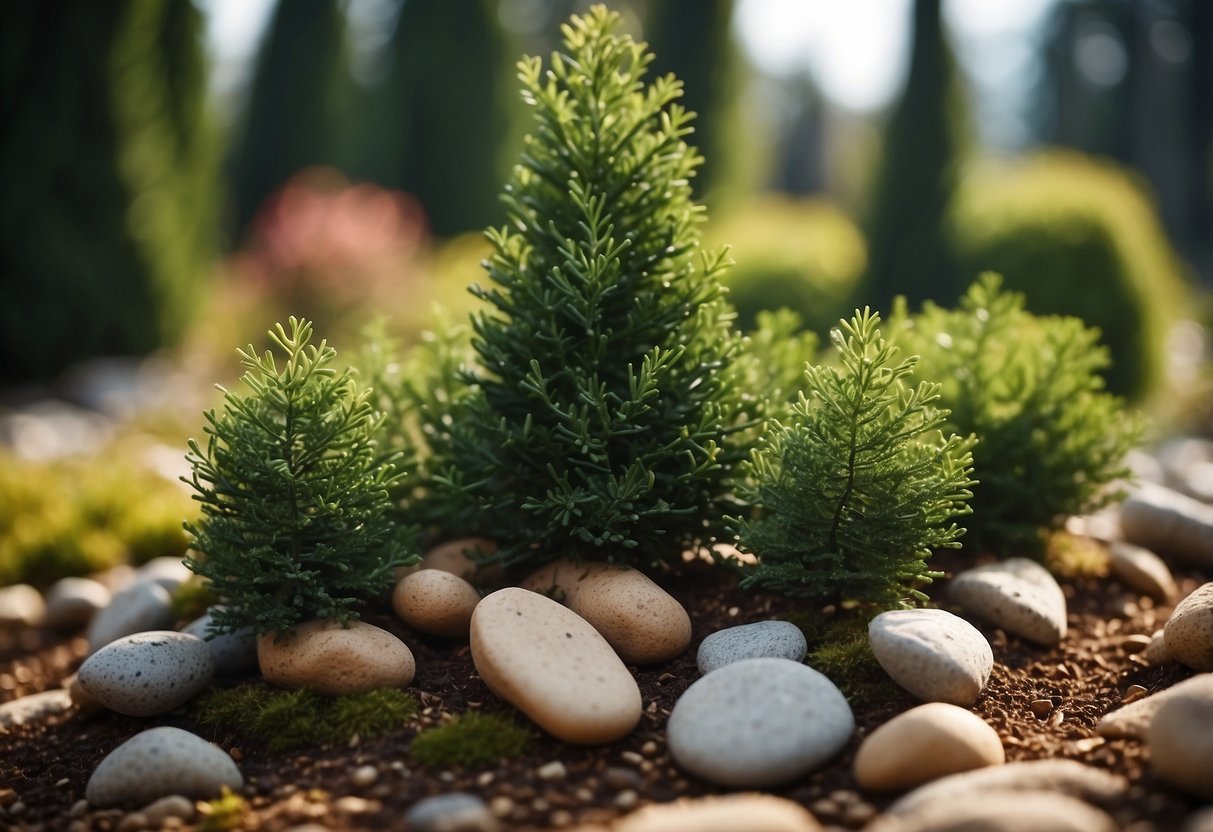
Thuja occidentalis ‘Smaragd’, also called Emerald Green Arborvitae, is a popular choice for small gardens. Its vibrant green color stays beautiful throughout the year. This plant is perfect for creating privacy screens or hedges.
It grows in a narrow, pyramidal shape and can reach up to 15 feet tall. This makes it an excellent space-saving option. Thuja occidentalis ‘Smaragd’ is also low maintenance and adapts well to different soil types.
For more information, visit the Gardenia website.
5) Juniperus communis ‘Compressa’
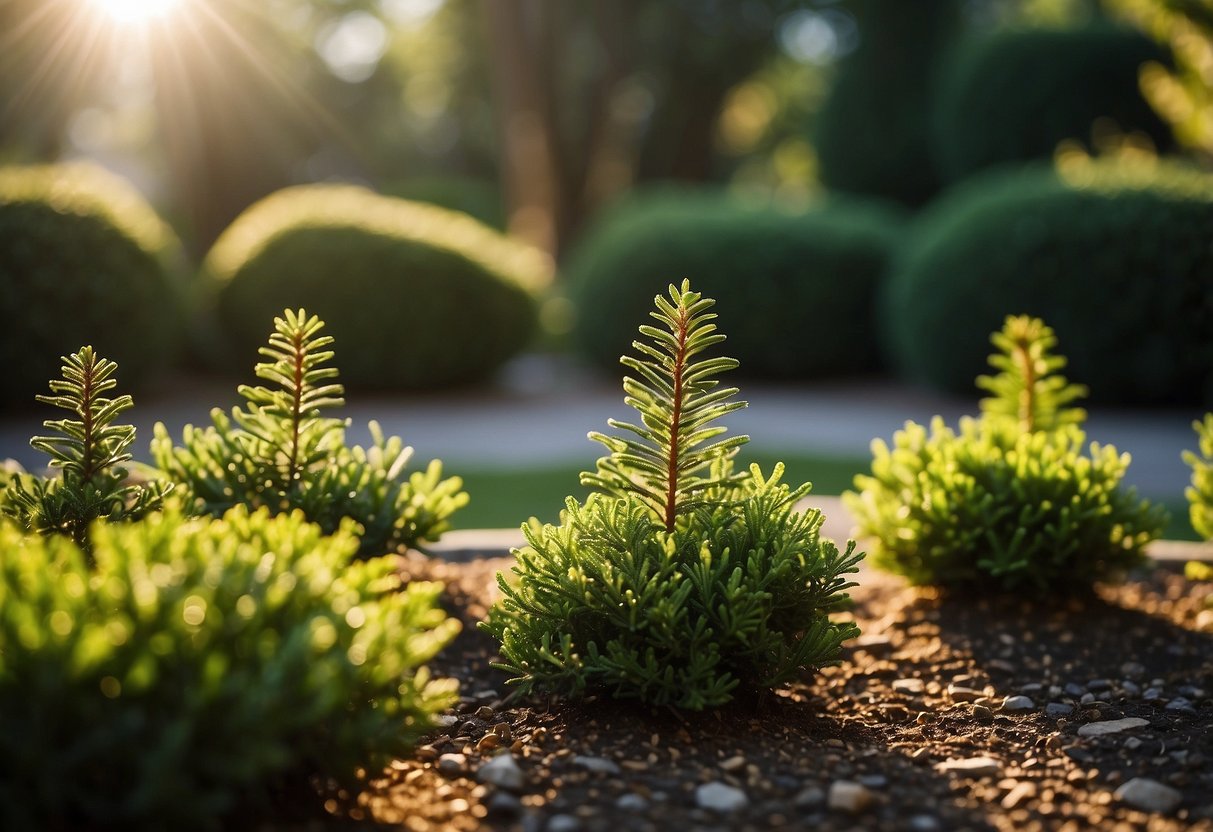
Juniperus communis ‘Compressa’, also known as Pencil Point Juniper, is an excellent choice for your garden.
This dwarf, columnar conifer reaches heights of 2-6 feet and spreads just 1-1.5 feet wide. Its blue-green needles can turn copper-bronze in winter, adding seasonal interest.
Perfect for tight spaces, it works well in mixed borders, rock gardens, or as a striking specimen plant. Learn more about Juniperus communis ‘Compressa’ here.
6) Abies balsamea ‘Nana’

Abies balsamea ‘Nana’ is a charming dwarf conifer. It’s perfect for small gardens and rockeries. This plant grows slowly, about 2-3 inches a year, which makes it low maintenance.
The dense, dark green needles are aromatic and add year-round color. It can thrive in both sun and shade. For more details, check out the Chicago Botanic Garden.
Its compact, globose shape is ideal for adding structure and beauty to your garden. A great option if you want an easy-to-care-for plant.
7) Cryptomeria japonica ‘Globosa Nana’

Cryptomeria japonica ‘Globosa Nana’ is a perfect choice for small gardens. This dwarf evergreen conifer has a neat, dense, dome-shaped form. Its foliage is bright green in warmer months, turning bronze to rusty red in winter.
It grows slowly, reaching 2-3 feet tall. You can appreciate its unique, pendulous branchlets all year round. This conifer thrives in full sun to partial shade with moist, well-drained soil. It adds beautiful texture and interest to your landscape. Learn more about this beautiful plant here.
8) Pseudotsuga menziesii ‘Little Jon’
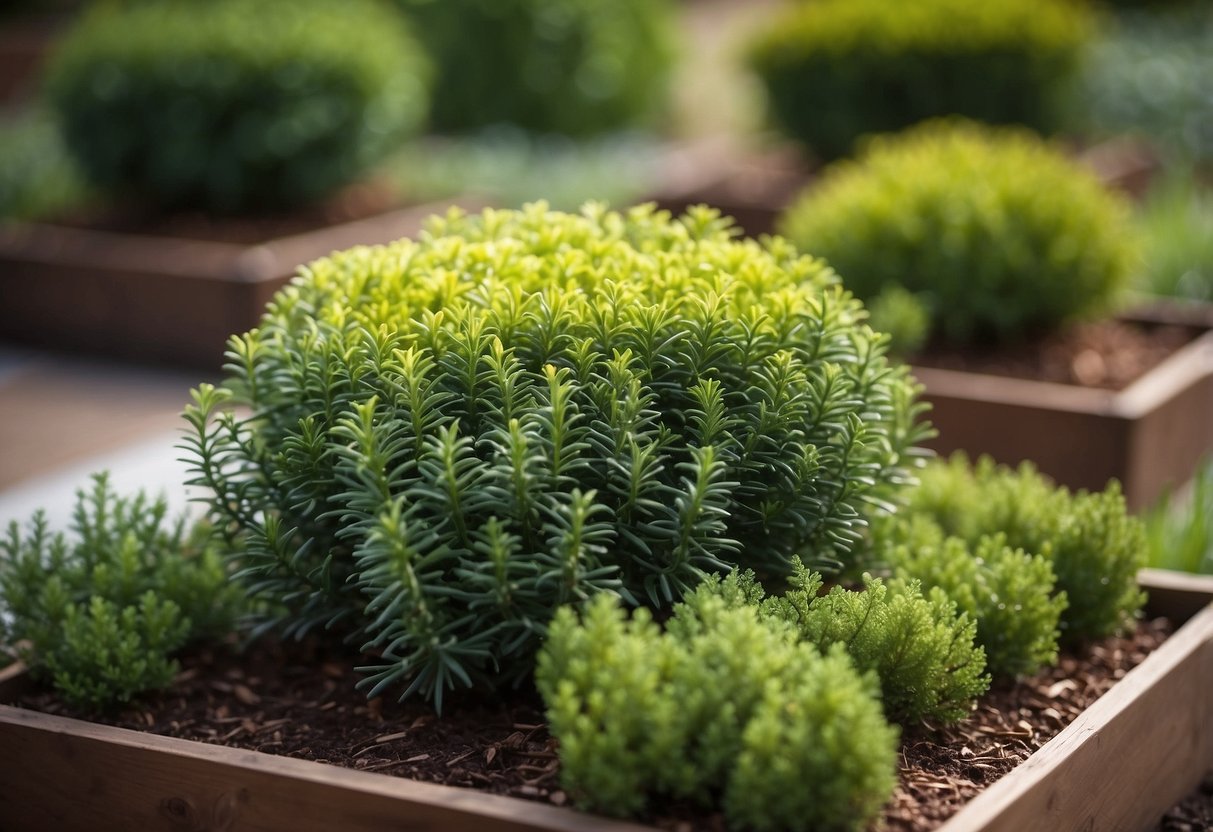
Pseudotsuga menziesii ‘Little Jon’ is a dwarf Douglas Fir perfect for small gardens. Its dark-green needles and near-perfect pyramidal shape make it a standout.
This conifer grows to about 3 feet tall and 2 feet wide in 10 years. It thrives in full sun and is hardy in zones 5-8. Its soft needles add a delicate touch to any garden setting.
For more details, visit Conifer Kingdom’s Little Jon Douglas Fir page.
9) Pinus strobus ‘Nana’

Pinus strobus ‘Nana’ is a charming addition to your garden. This dwarf evergreen has a compact, dome-shaped form, making it perfect for small spaces.
Its soft, silvery blue-green needles add a soothing color contrast. Growing at a slow pace of 2-5 inches per year, it reaches up to 2-3 feet tall and wide in about 10 years.
For optimal growth, plant it in full sun. This dwarf conifer thrives well in various soil types, provided it has good drainage. Consider adding it as a specimen plant for a touch of year-round greenery.
10) Taxus baccata ‘Repandens’

Taxus baccata ‘Repandens’, also known as the English Yew, is a great choice for your garden. This low shrub spreads wide, often twice as wide as it is tall.
Its glossy, dark green needles create a lush, dense look. The branches have a unique, pendulous shape that adds character.
This evergreen shrub grows slowly, making it easy to manage. It can reach up to six feet in height and 15 feet in width.
A bonus is that it rarely produces seeds, so there’s minimal mess to clean up.
Choosing the Right Dwarf Conifers

Selecting dwarf conifers involves knowing their growth habits and popular varieties. This helps ensure you choose the best plants for your garden space and climate.
Understanding Growth Habits
Dwarf conifers grow in different shapes and sizes. Some have a compact globe shape, while others are more columnar or spreading. Knowing how a conifer grows is important so you can place it in the right spot.
For example, the dwarf globe blue spruce has a rounded shape and reaches a height of 3 to 5 feet. Meanwhile, the dwarf Japanese cedar grows slowly but can form an elegant, taller specimen.
These plants also vary in growth speed, with some like the Golden Globe Arborvitae growing only a few inches per year. Choosing slow growers can be beneficial for small spaces because they won’t outgrow their spot quickly.
Popular Varieties
Several dwarf conifers are popular due to their unique features. Blue Star Juniper has striking silvery-blue foliage and compact growth, making it a great choice for small gardens. Another option is the Chinese Golden Cedar, which stands out with its bright, golden-green leaves.
The Globosa Spruce is known for its rounded shape and vibrant blue needles. It fits well in rock gardens or as a standalone feature. For year-round color, the Golden Globe Arborvitae offers bright yellow-green foliage that remains appealing through winter.
These varieties are well-suited for USDA zones 2 to 8, ensuring they thrive in various climates. Picking the right conifer based on your garden’s conditions and your aesthetic preferences will bring lasting beauty and structure to your space.
Designing Your Dwarf Conifer Garden

Designing a dwarf conifer garden involves using unique trees as focal points and incorporating complementary plants to create an attractive and balanced landscape.
Creating a Focal Point
Choose a striking dwarf conifer to serve as the central focus of your garden. The ‘Fat Albert’ blue spruce with its bright blue needles or the ‘Golden Mop’ sawara cypress with its vibrant yellow foliage make excellent choices.
Place your chosen conifer where it will draw the most attention, such as the center of a garden bed or near a pathway. Surrounding this focal point with smaller dwarf conifers or other plants will enhance its visual impact. Ensure there’s enough space around the focal tree for it to grow without being crowded by other plants.
Using Complementary Plants
Pair your dwarf conifers with plants that complement their colors and textures. For example, the soft green needles of the Aurea Nana look great next to plants with darker foliage or brightly colored flowers.
Ideas to consider:
- Perennials: Flowers like daisies or lavender can add a splash of color.
- Grasses: Ornamental grasses add movement and contrast.
- Groundcovers: Low-growing plants like thyme or sedum can fill in gaps and prevent weeds.
By carefully selecting complementary plants, you can create a cohesive and visually appealing garden that thrives throughout the year. Make sure the plants you choose share similar sunlight and water needs for a harmonious garden environment.







